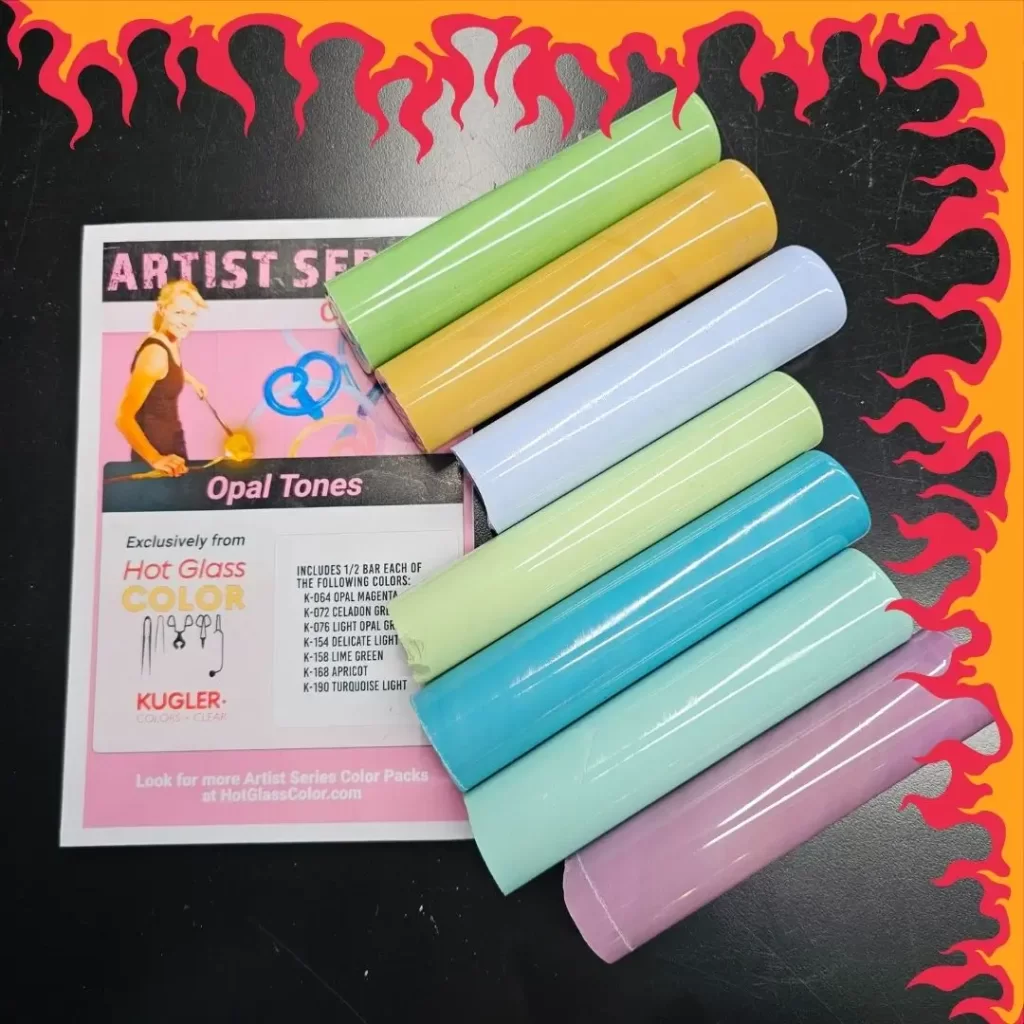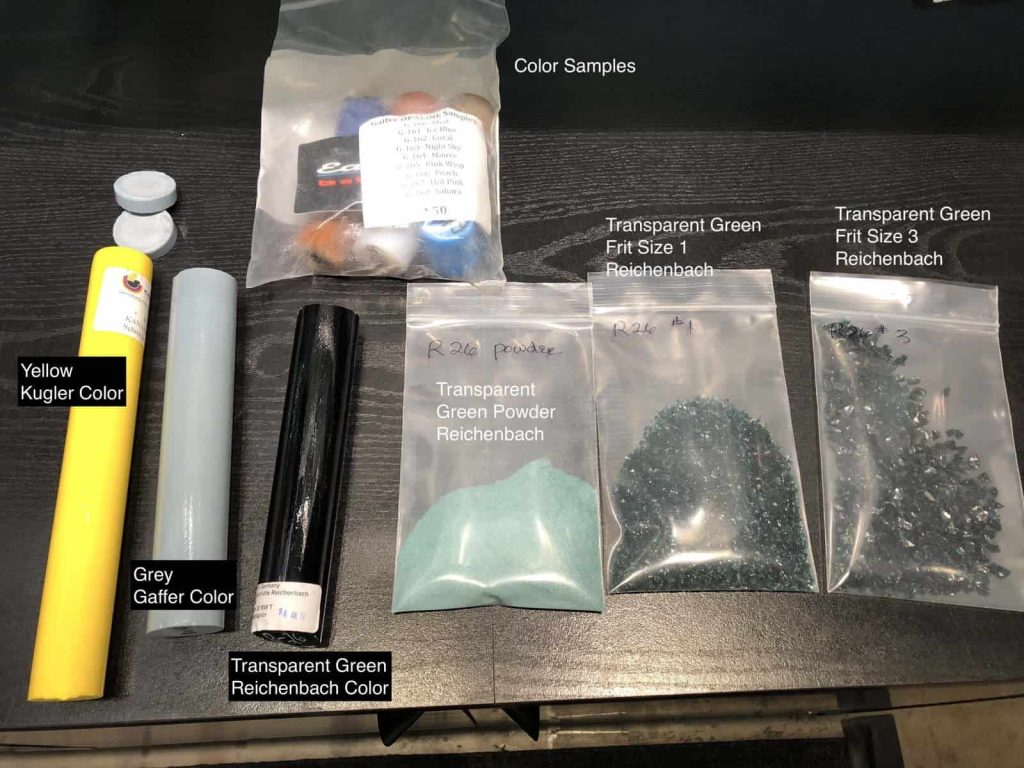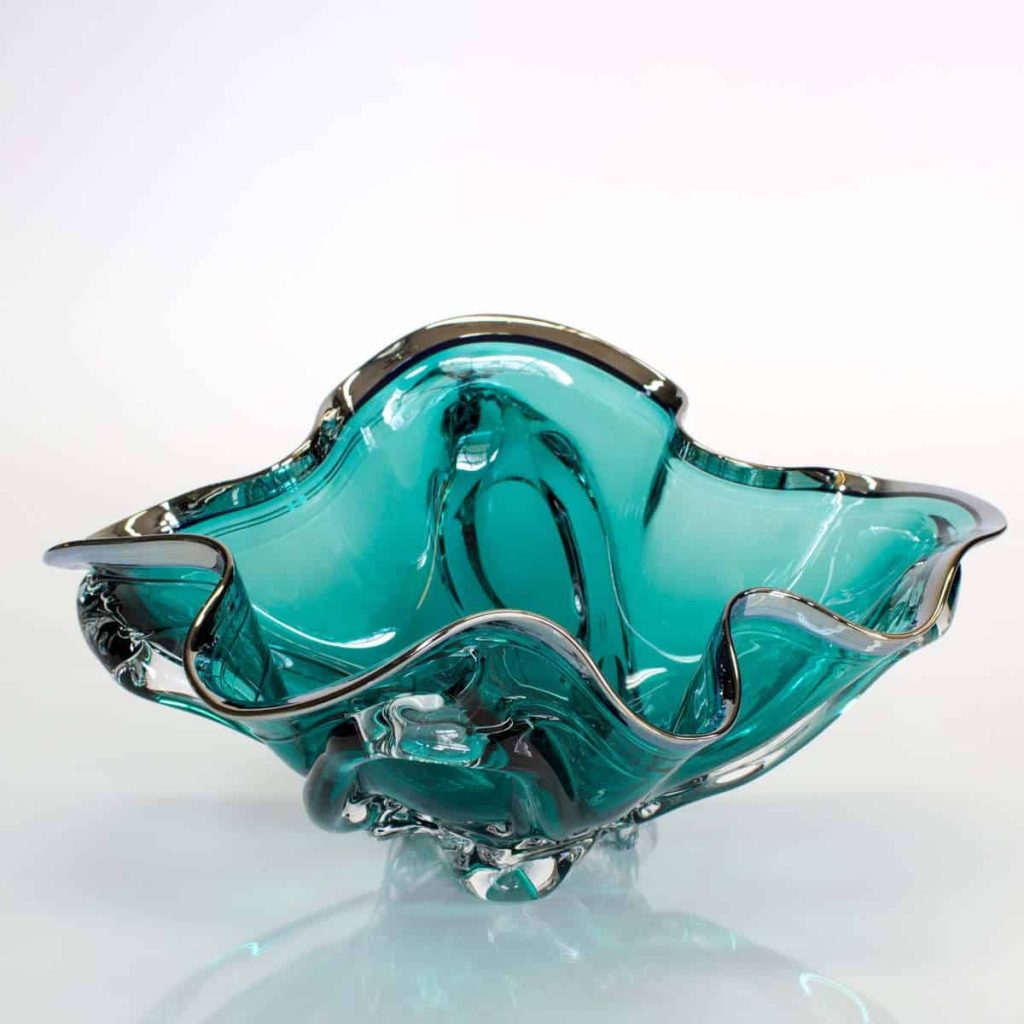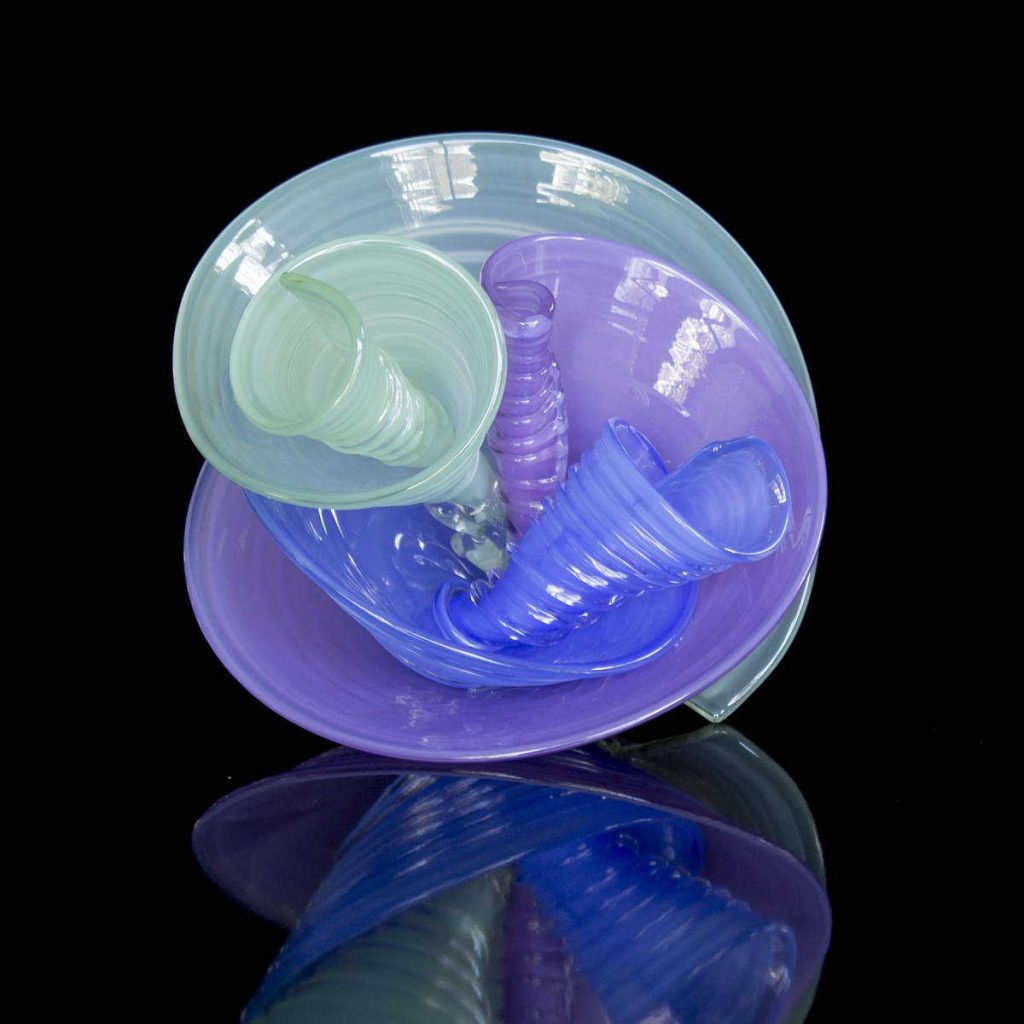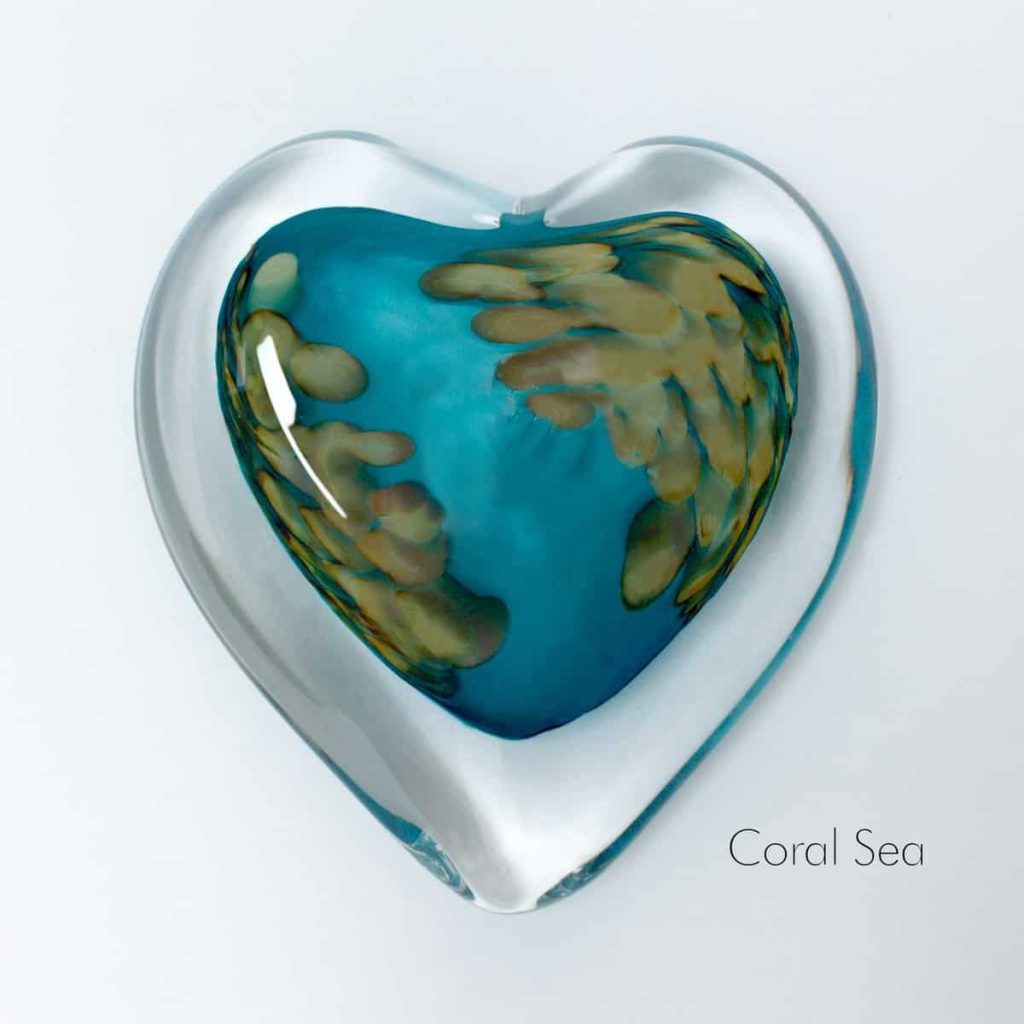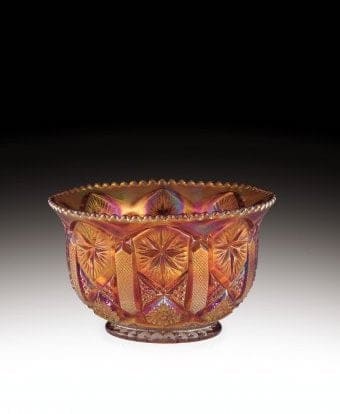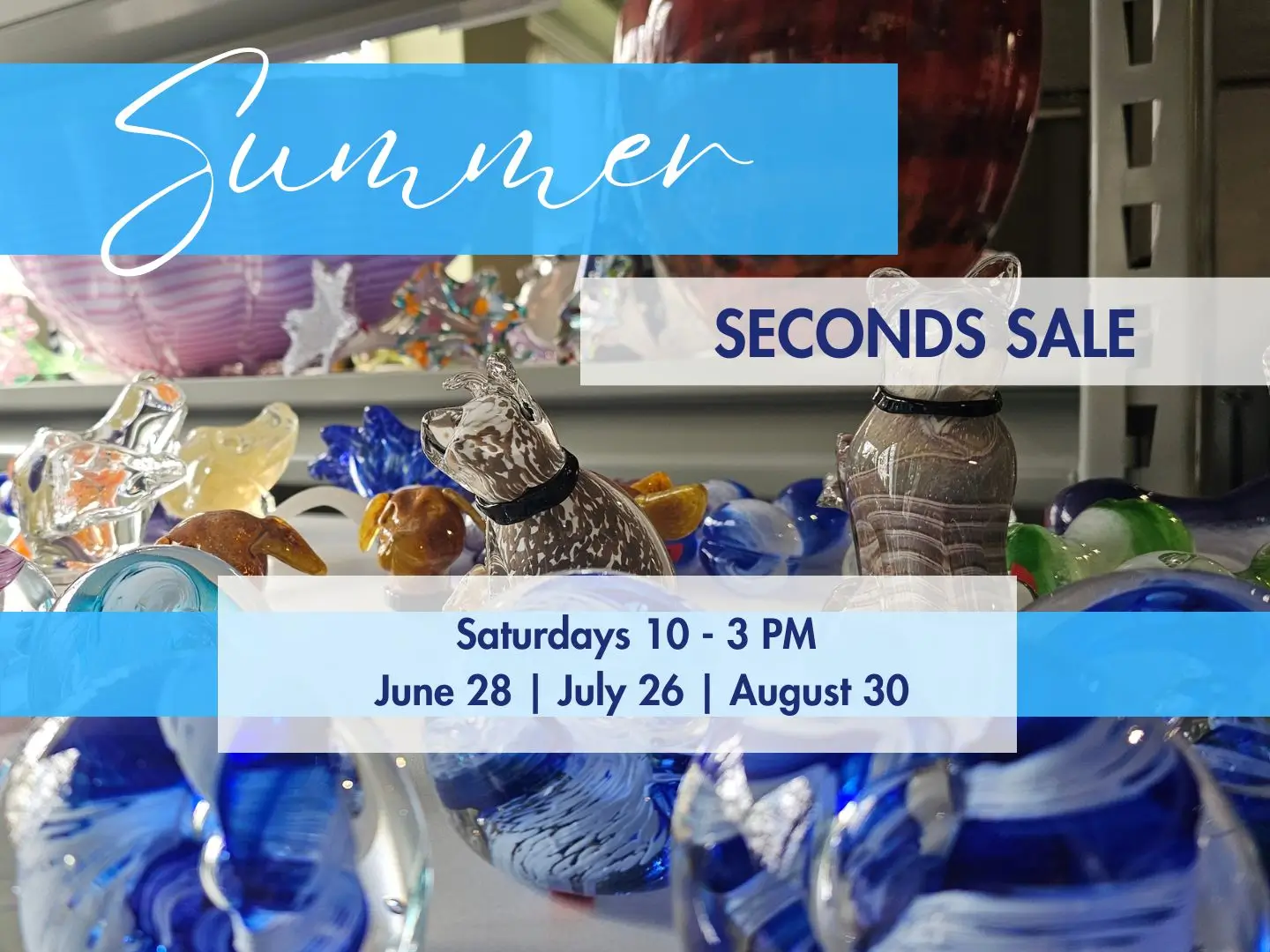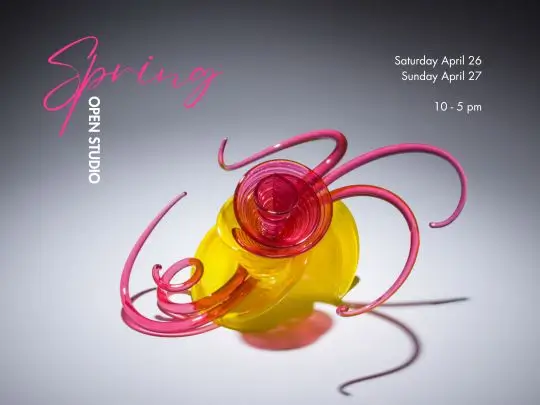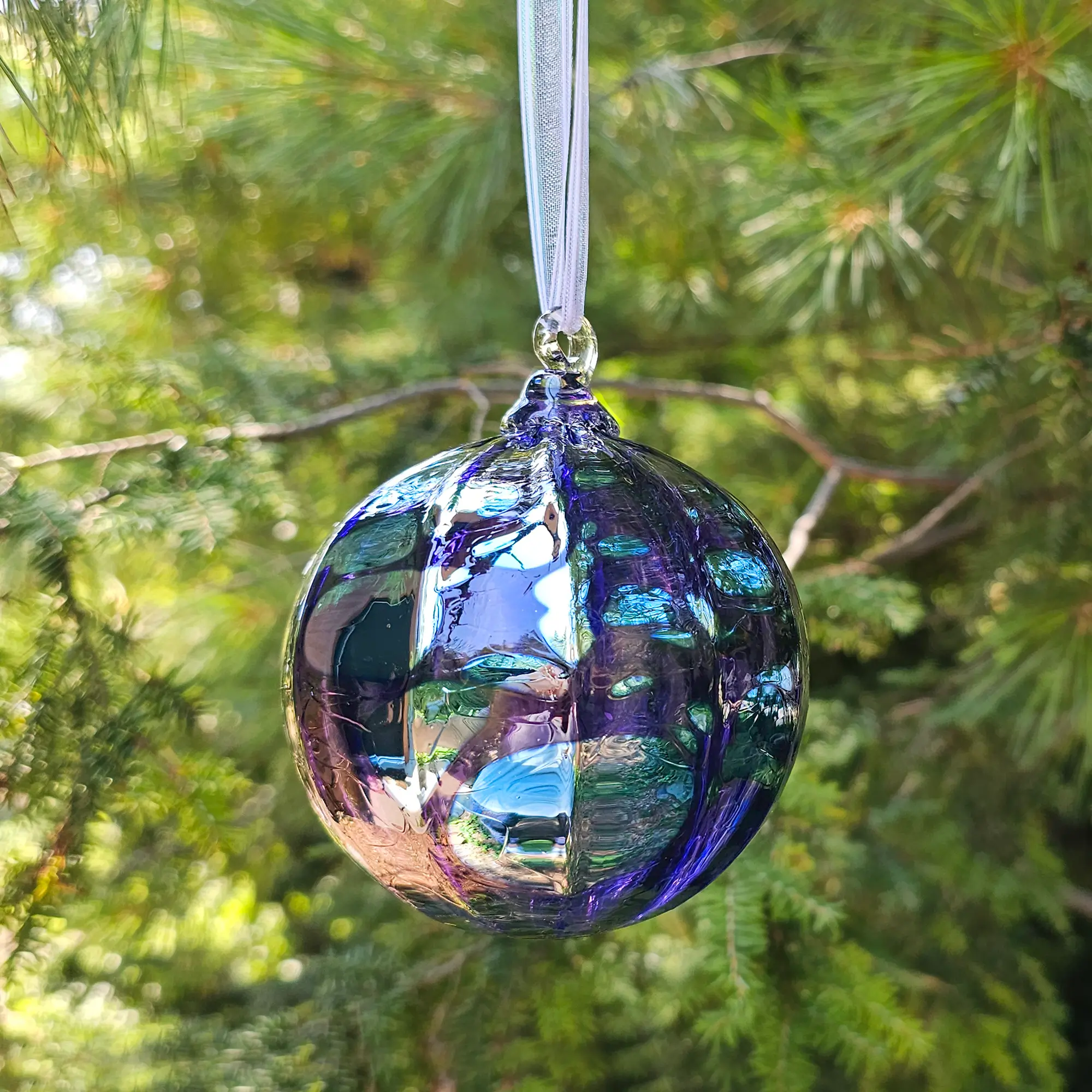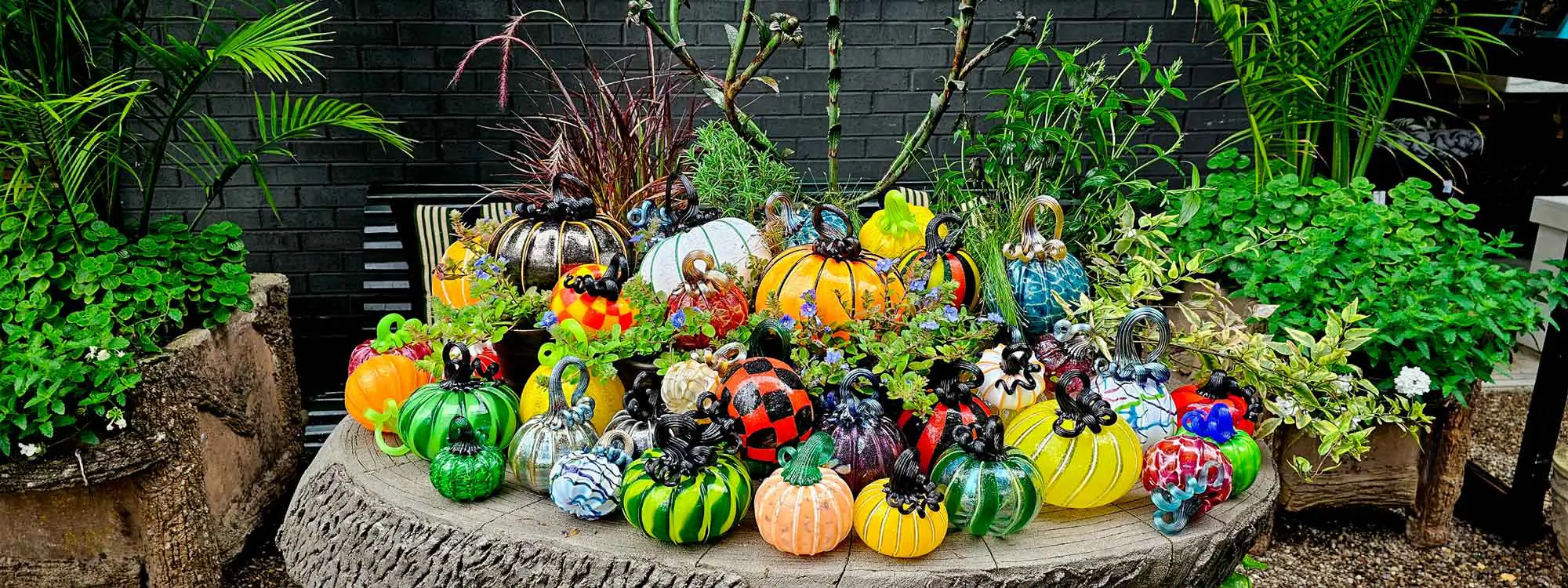Glassblowing in general is fascinating, but even more possibilities are created when you add elements to it. This can take the form of different techniques, colors, working with different types of glass, etc. Since these are things we get asked about quite frequently, we thought it would be fun to give you the rundown on colored & specialty glass!
Types of Colored Glass
The colors that we add to the basic clear glass come in three forms (which you can see to the right):
- Color rods – made of concentrated colored glass and must be pre heated in the color warmer before applied.
- Frits – coarsely ground bits of color
- Powder – enables the glassblower to layer color or produce fine gradations of color.
The artist has to be careful when choosing colors as not they are not all compatible because they retain and release heat at different temperatures. Click here to see the different ways color can be applied.
Colors can be either transparent or opaque. To the right, the Cool Blue Free Form is transparent with an opaque metallic lip. The metallic lip is achieved by reducing the glass, which we’ll discuss more later. In comparison, the sculpture in the middle is made of opaque glass, so you can’t see through it.
Transparent and opaque glasses can be combined. We use both together for our heart paperweights. The Coral Sea heart paperweight to the right is primarily a transparent turquoise color. Opaque shades of brown added on top create this signature design. (P.S. If you love any of the pieces to the right, click on the image to find them in our webstore!)


Cane
People often wonder how we create the beautiful and intricate patterns that make up our Zanfirico bowls and vessels. We use cane that we pull in the studio.
We pull long strands of cane that reach all the way across the studio (don’t believe us? Watch the process here!). They’re broken up into smaller pieces, about 6″ long and used for our Zanfirico, swizzle sticks and other art.
Can we recycle glass?
We are frequently asked what we do with discarded glass. The simple answer is, if it’s clear glass we can recycle it – but only some of the time and not too often. It’s too too complicated to get more in depth with here. We can’t reuse our colored glass for the blowing process but it can be used for other things, like slumping or laying in terrazzo.
Specialty Glass
Aside from just adding color to glass, there are different types of specialty glass. At epiphany studios, we occasionally use reduced glass and dichroic glass. People frequently ask us about other types of glass, which we don’t make, so we thought we’d share some information about them!

Reduced Glass
Reduced glass has a beautiful metallic sheen like you can see in the Splash at left (and this Splash Bowl we have in the webstore).
To create the metallic look, we use special frit and reduce the oxygen in the reheating chamber. We step on a peddle that allows us to control the amount of oxygen in the chamber.
We have some control over this so it can have more or less of a metallic finish. The end result is really eye-catching and beautiful. You can peruse the artwork on our site here to see more examples of reduced glass.
Dichroic Glass
Dichroic or “dichro” glass is glass which shifts between two or more colors in the light. We’ve been using it a lot this year in our sparkly Vedic Paperweights (as seen to the right).
A type of dichroic glass dates back to 4th century Rome. However, we can thank NASA for our modern day dichro! This article from Fire Mountain Gems explains, “Dichroic glass became more widely known in modern society when NASA decided to use it in the 1950s and ’60s. The difference is, instead of using silver and gold, NASA developed a process to vaporize metals with electron beams in a vacuum chamber and then apply it directly to surfaces in an ultra-thin film.”
Micro-thin layers of metals or oxides are stacked together to create this beautiful shifting effect. There are many different types of dichroic glass available to purchase. You can see some of the amazing types of dichroic glass at CBS. Some have patterns and textures and really add something special to your glass work!
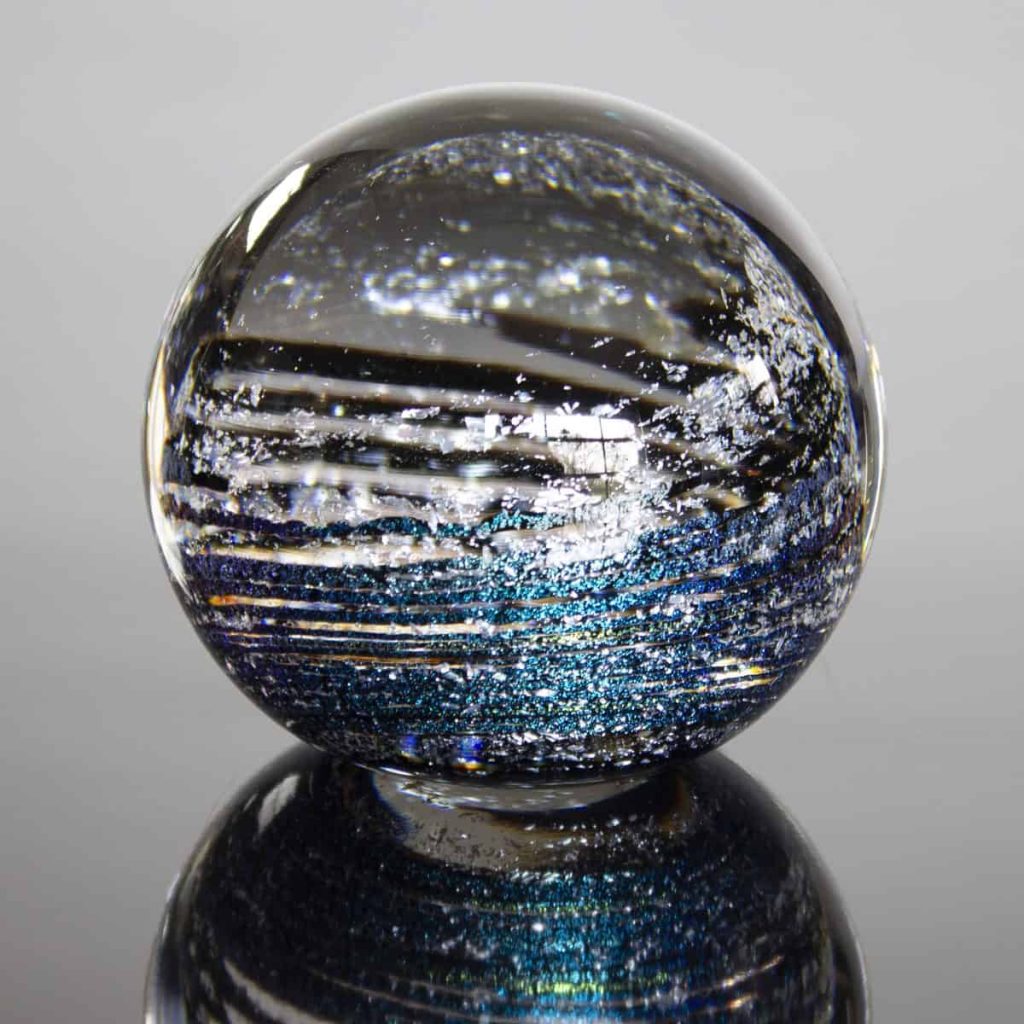
Carnival Glass
You may have seen Carnival Glass in an antique store, on eBay or even in a relative’s house. It’s recognizable by its shimmery iridescent finish as well as specific colors, patterns and shapes. So what are the origins of this type of glass and how was it made?
According to this article from Spruce Crafts, in the 1900s, Carnival Glass was a prize at carnivals. It was called the “poor man’s Tiffany” due to the inspiration taken from the more opulent Tiffany glass.
A cast iron mold was used to make these pieces. And an iridescent overspray made of metallic salts created the characteristic iridescent finish.
This is just a brief look at Carnival Glass. To learn more about the history and types you can find, we’ve listed all of our resources at the end of this post.
Uranium/ Vaseline Glass
The main characteristic of vaseline glass is its light yellow color that glows bright green under a blacklight.
This comes from adding 0.1-0.2 percent of uranium dioxide to the glass’s formula. These pieces are actually slightly radioactive due to the addition of uranium. Fortunately, the amount is so small that it’s nothing to be concerned about.
Uranium or Vaseline Glass was produced in the mid-1880s through the beginning of World War II. Like Carnival glass, it is found in antique stores or on eBay and has a really interesting history that you can read about in the links below.
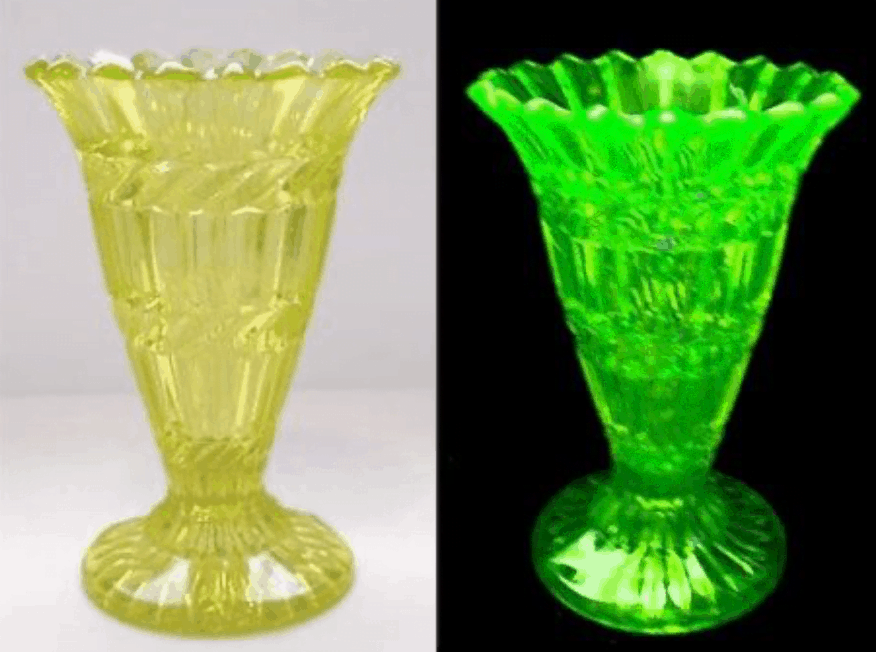
Learn More
We hope you learned a bit about types of colored & specialty glass! If you’d like to read more about glass, check out our Glassblowing 101 and Art Glass blog posts. Our art glass post goes into different techniques that are used to manipulate glass.
Find daily updates on our Facebook and Instagram. Subscribe to our weekly newsletter for updates, blogs, coupons and more!
Resources
Dichroic Glass
What is Dichroic Glass?
Wikipedia
Carnival Glass
David Doty’s Carnival Glass Website
A Collector’s Guide to Carnival Glass
How Carnival was Made
What is Carnival Glass?
Wikipedia
Uranium/ Vaseline Glass
Overview of Vaseline Glass
Wikipedia


